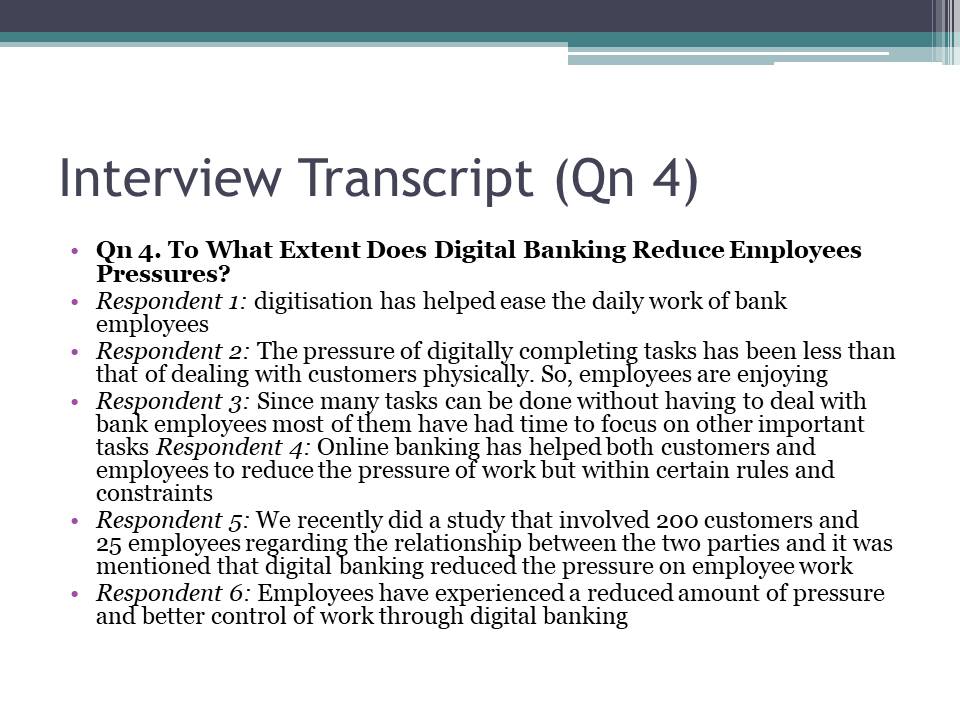What is the Problem?
- No known Impact of digitisation on:
- DIB’s Service Quality.
- Customer Satisfaction Standards.
- Employee Workload.
- Operational Efficiency.
This presentation is about the effects of online banking on Dubai International Bank (DIB). The financial institution acts as a case study for understanding the impact of digitisation on Islamic banking. The investigation was premised on the lack of adequate information regarding the effects of e-banking on DIB’s service quality, customer satisfaction standards, employee workload and operational efficiency. Data was obtained from secondary and primary research. Primary information was generated by interviewing six employees of DTB, while secondary data was gathered from a review of credible published data.
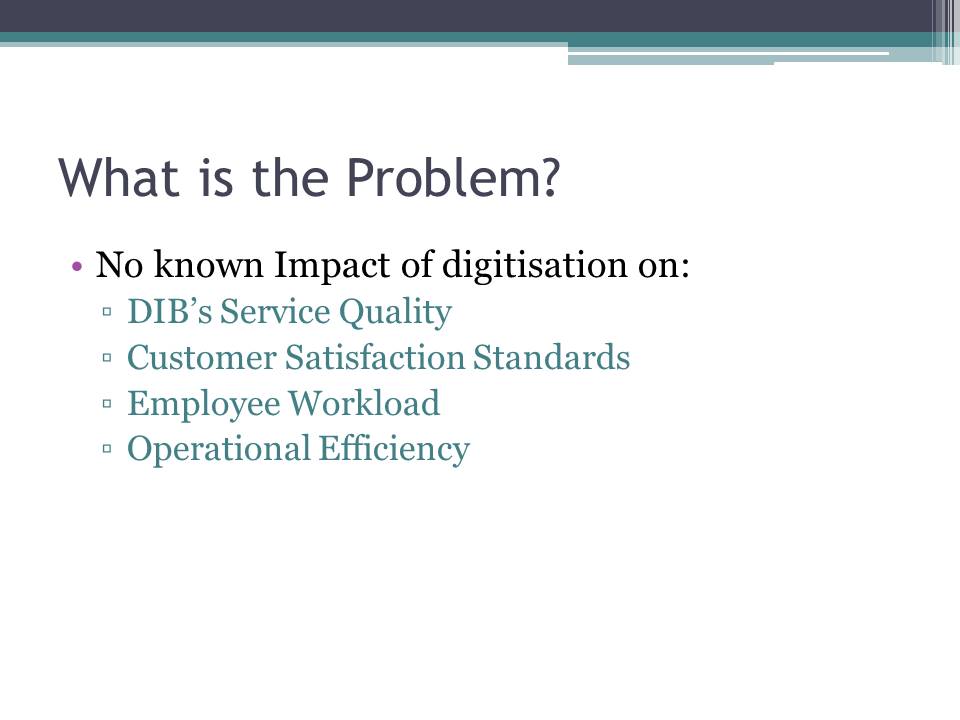
What has Caused the Problem?
- Growth of e-banking.
- Development of new financial products.
- Changing customer preferences.
- Technological advancements.
The lack of proper understanding regarding the effects of e-banking on DIB operations is caused by the rapid rate of technological advancement in Islamic banking and the larger global banking sector. These changes have led to the growth of the online banking platform and the development of new financial products. For example, DIB has developed t-banking (telephone banking), e-banking (electronic banking) and m-banking (mobile banking) from this trend. Lastly, changing customer preferences has contributed to the failure to understand the impact of the digital change because DIB’s clients are demanding better quality services in the midst of the change process.
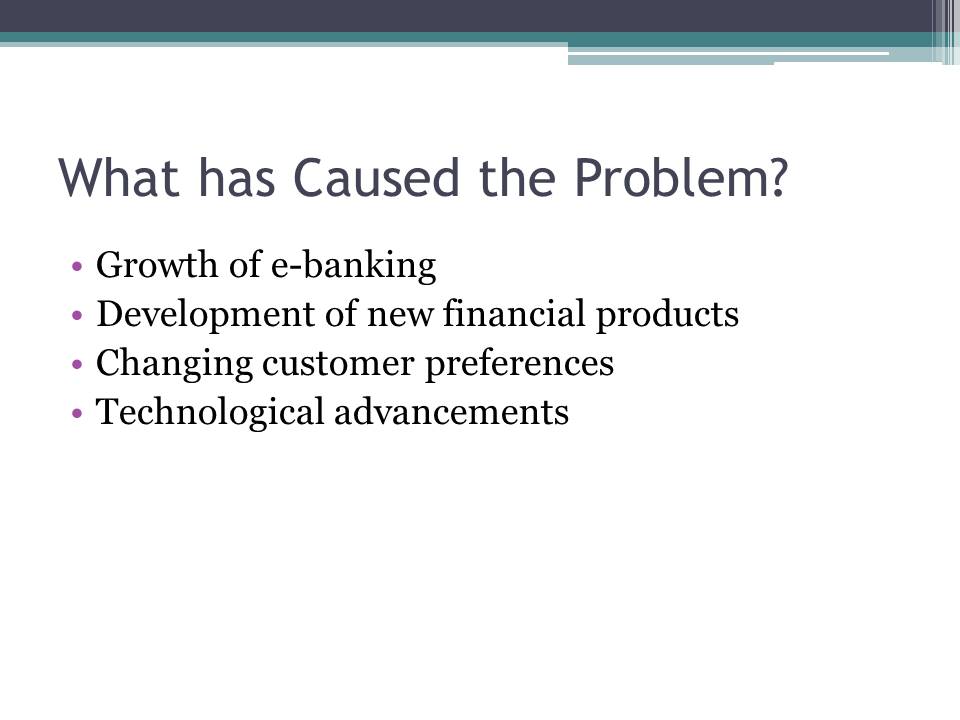
How to Fix the Problem
- Sensitisation about benefits of e-banking.
- Increase awareness about digital banking.
- Improve user interface.
From our investigation, we found out that Argyris maturity theory, Lewin’s change model, Schein’s management theory and the technology acceptance model were pivotal to our understanding of change management at DIB. The technology acceptance model highlighted the need to make the change user-friendly; Schein’s management model demonstrated the need for supporting the change through a culture shift; Argyris maturity theory emphasised the need to balance management-employee relationships and Lewin’s change model highlighted the need to understand the lifecycle of the change process. Based on these theoretical reviews, we deduced that there is a need for DIB to sensitise customers about the benefits of e-banking to improve their overall client experience because digitisation enhances customer satisfaction. We also established that the change (digitisation) had a positive impact on the bank’s service quality, efficiency and employee performance. Formulating a campaign to increase clients’ awareness about digital banking to reach the maximum number of users and constantly improving the user interface to enhance customer experience would further enhance the company’s productivity by improving the reliability of the e-banking platform.
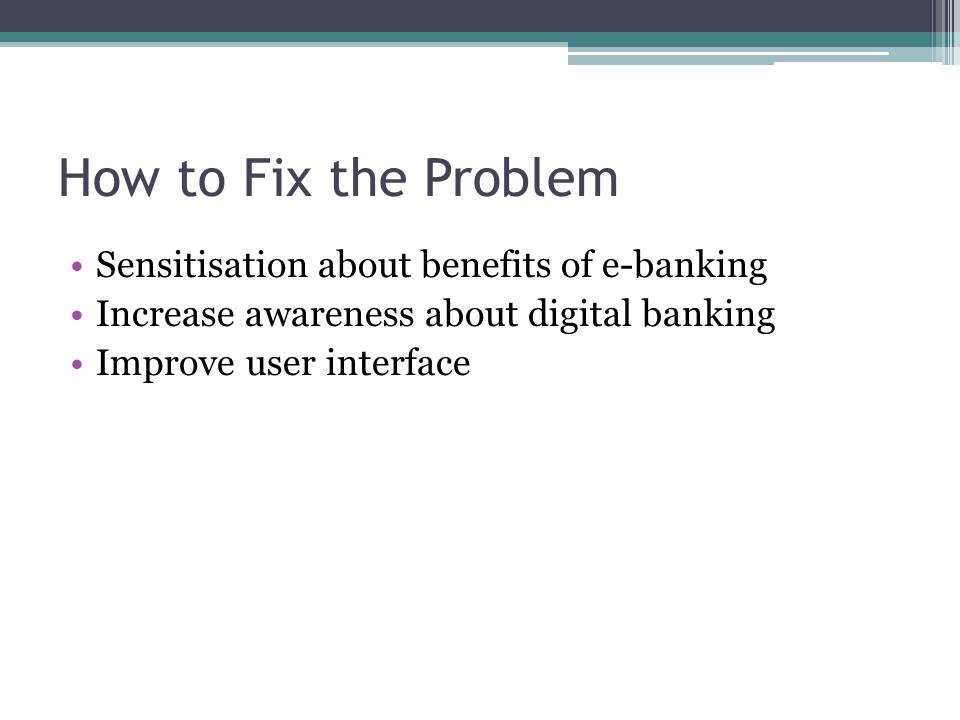
Interview Transcript (Qns 1&2)
Qn 1. How Does Digital Banking Affect The Quality Of Services At DIB?
- Respondent 1: Digital banking has had a positive effect on the quality of services provided at the bank because by reducing the time and effort taken to process bank transactions.
- Respondent 2: Digital banking has improved the quality of services offered by the bank through a reduction in human errors.
- Respondent 3: Digital banking has improved the efficiency of processing bank transactions.
- Respondent 4: I should say it has brought time and energy savings but these benefits have been made possible through the development of a good user interface.
- Respondent 5: Digital Banking has helped us to develop new products, service market opportunities and support management processes, such as planning, controlling, and co-ordination.
- Respondent 6: It has reduced delays, increased the efficiency of processing transactions and aligned our digitisation strategy with national goals.
Qn 2. How Has Digital Banking Affected the Efficiency of DIB’s Operations?
- Respondent 1: Digital banking has helped to provide indirect services to customers, such as updating personal documents, with significant gains in time.
- Respondent 2: It has helped save time by reducing the number of customers who physically visit the bank.
- Respondent 3: Digital banking has helped to improve our speed of information exchange, thereby increasing time and cost savings.
- Respondent 4: Although some services need the presence of the customer at the branch, digital banking has created significant gains in time and energy savings.
- Respondent 5: e-Banking has helped to improve the efficiencies of cost management by reducing the need for data-to-day processing.
- Respondent 6: Digital banking has lowered the turnaround time for processing transactions via automation and paperless banking.
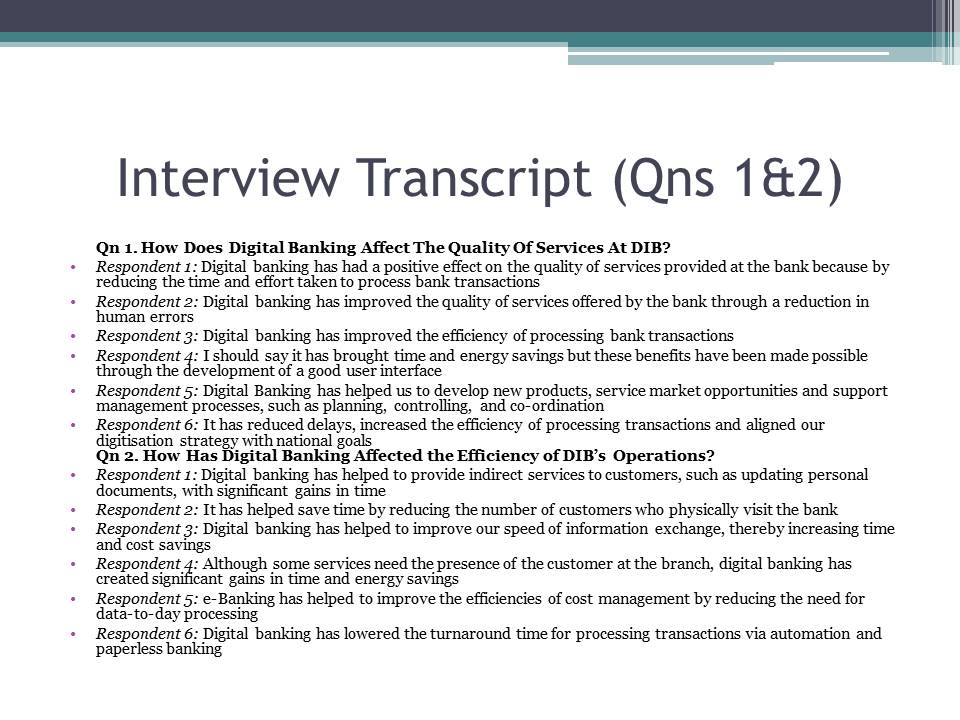
Interview Transcript (Qn 3)
Qn 3. How Has Digital Banking Influenced Customer Satisfaction At DIB?
- Respondent 1: By digitizing some of our services, we have seen an increase in customer satisfaction, which has also resulted in improved levels of customer loyalty.
- Respondent 2: Customer satisfaction levels increased when services and transactions become easier for most customers to complete through digital banking.
- Respondent 3: So….I believe that when digital banking is fast, friendly, and easy to use, it helps most of our consumers to complete their daily or monthly tasks Respondent 4: Recently, I had a discussion with our marketing team and they said customer satisfaction levels have recently improved because of an increased trust in online banking services.
- Respondent 5: Increased awareness about electronic banking has made some clients comfortable about completing their transactions away from the bank.
- Respondent 6: Since customers do not have to go through the hassle of visiting the branch, they are more satisfied with our services.
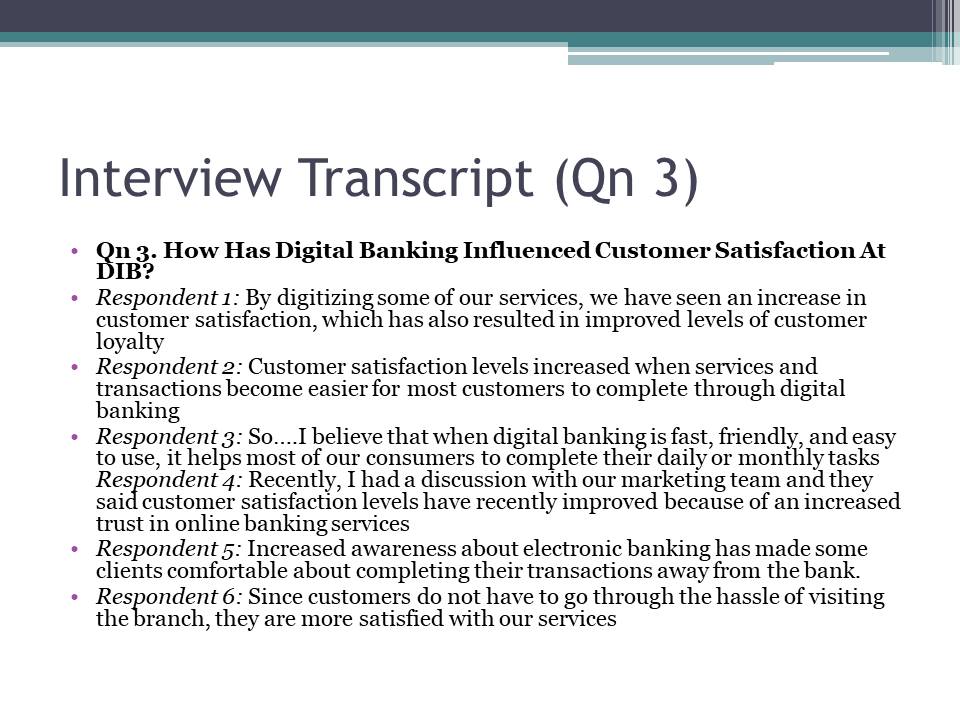
Interview Transcript (Qn 4)
Qn 4. To What Extent Does Digital Banking Reduce Employees Pressures?
- Respondent 1: digitisation has helped ease the daily work of bank employees.
- Respondent 2: The pressure of digitally completing tasks has been less than that of dealing with customers physically. So, employees are enjoying.
- Respondent 3: Since many tasks can be done without having to deal with bank employees most of them have had time to focus on other important tasks Respondent 4: Online banking has helped both customers and employees to reduce the pressure of work but within certain rules and constraints.
- Respondent 5: We recently did a study that involved 200 customers and 25 employees regarding the relationship between the two parties and it was mentioned that digital banking reduced the pressure on employee work.
- Respondent 6: Employees have experienced a reduced amount of pressure and better control of work through digital banking.
